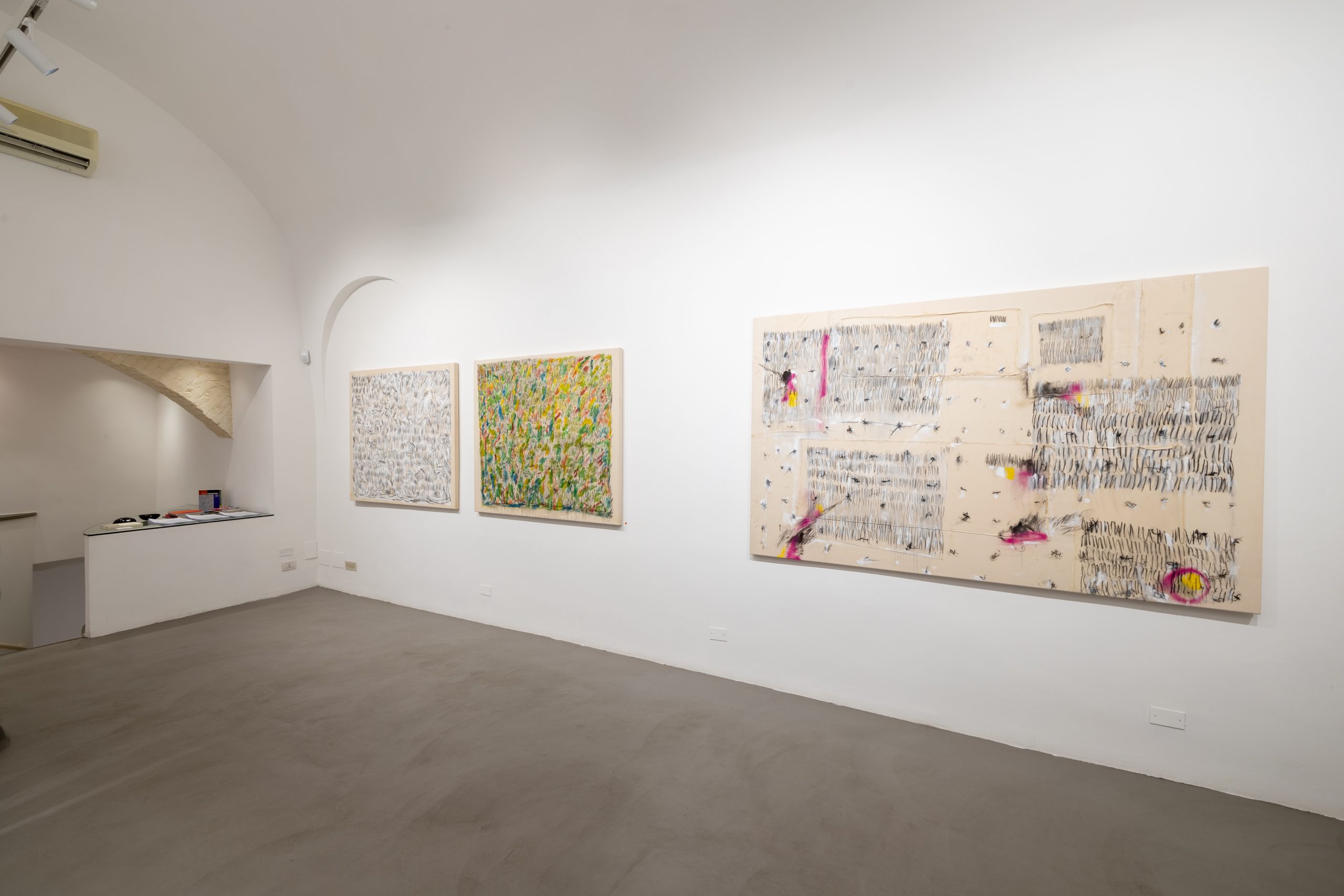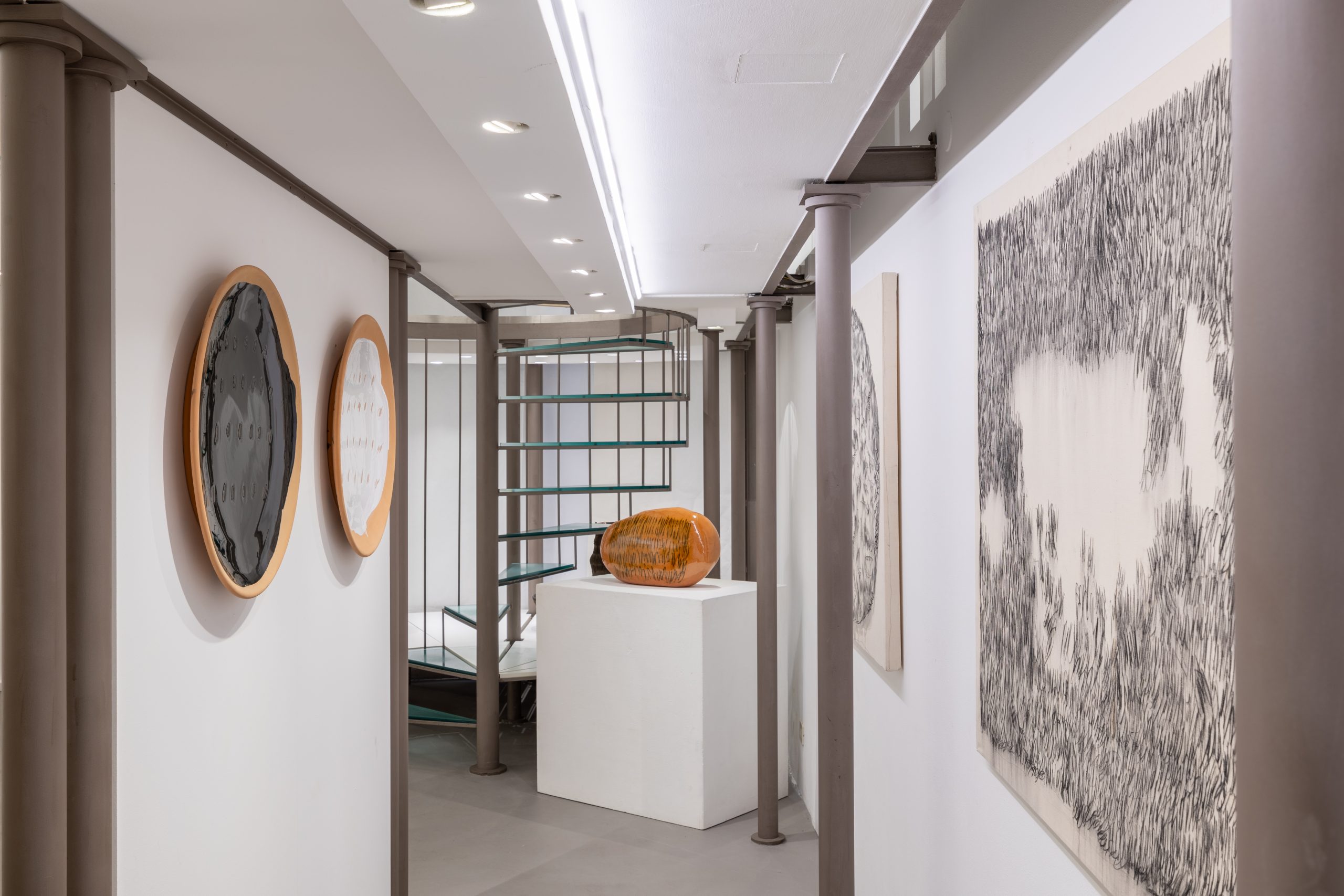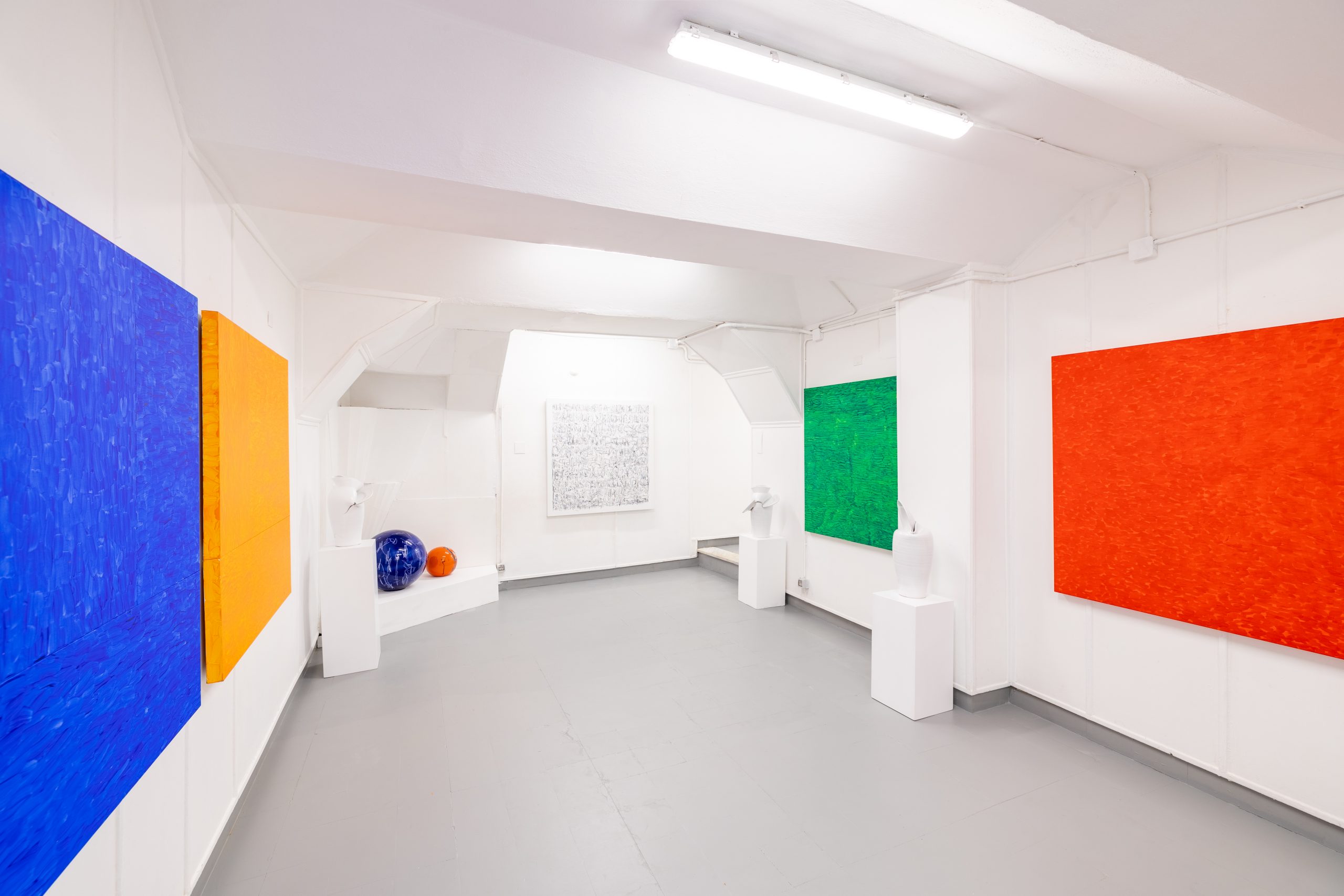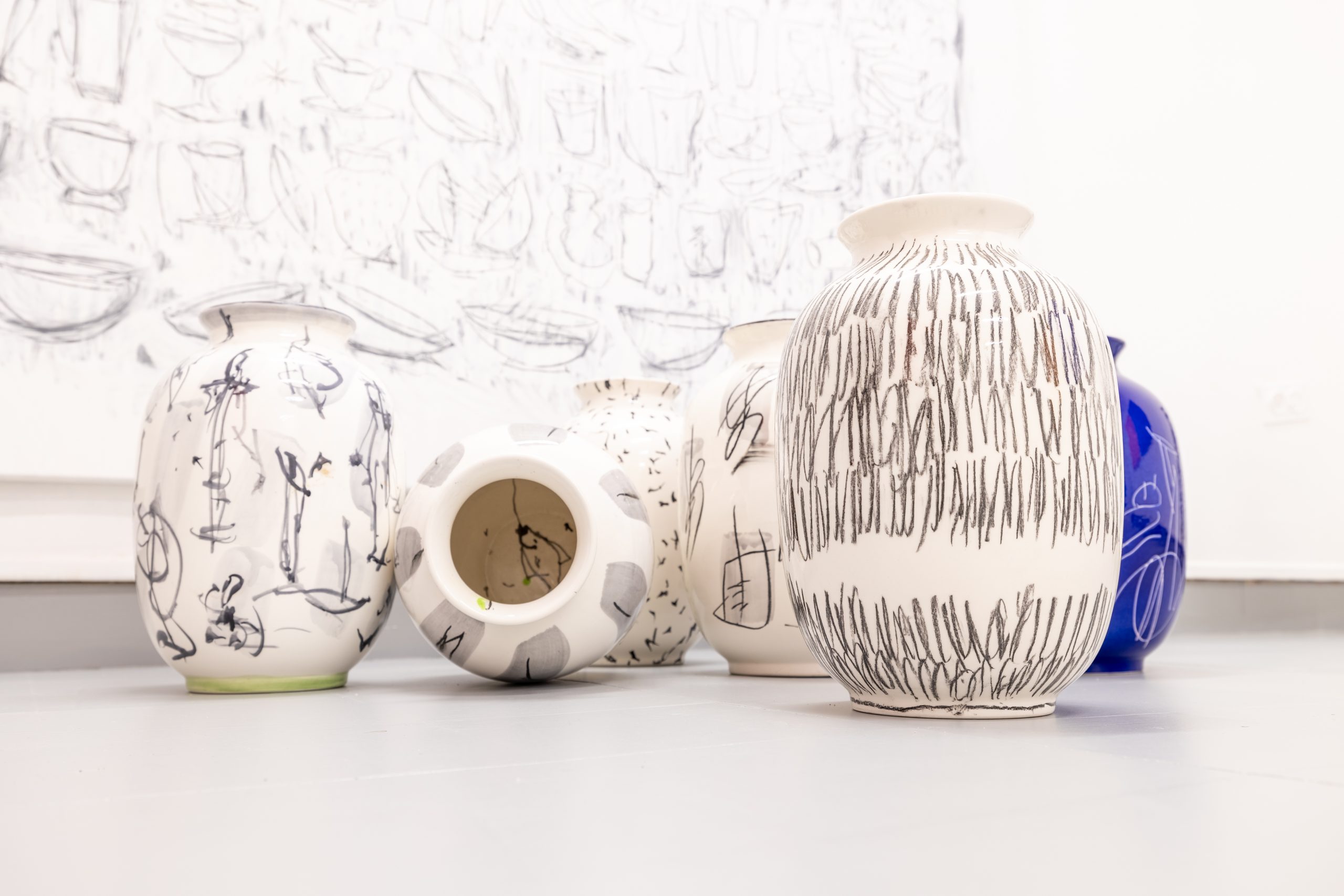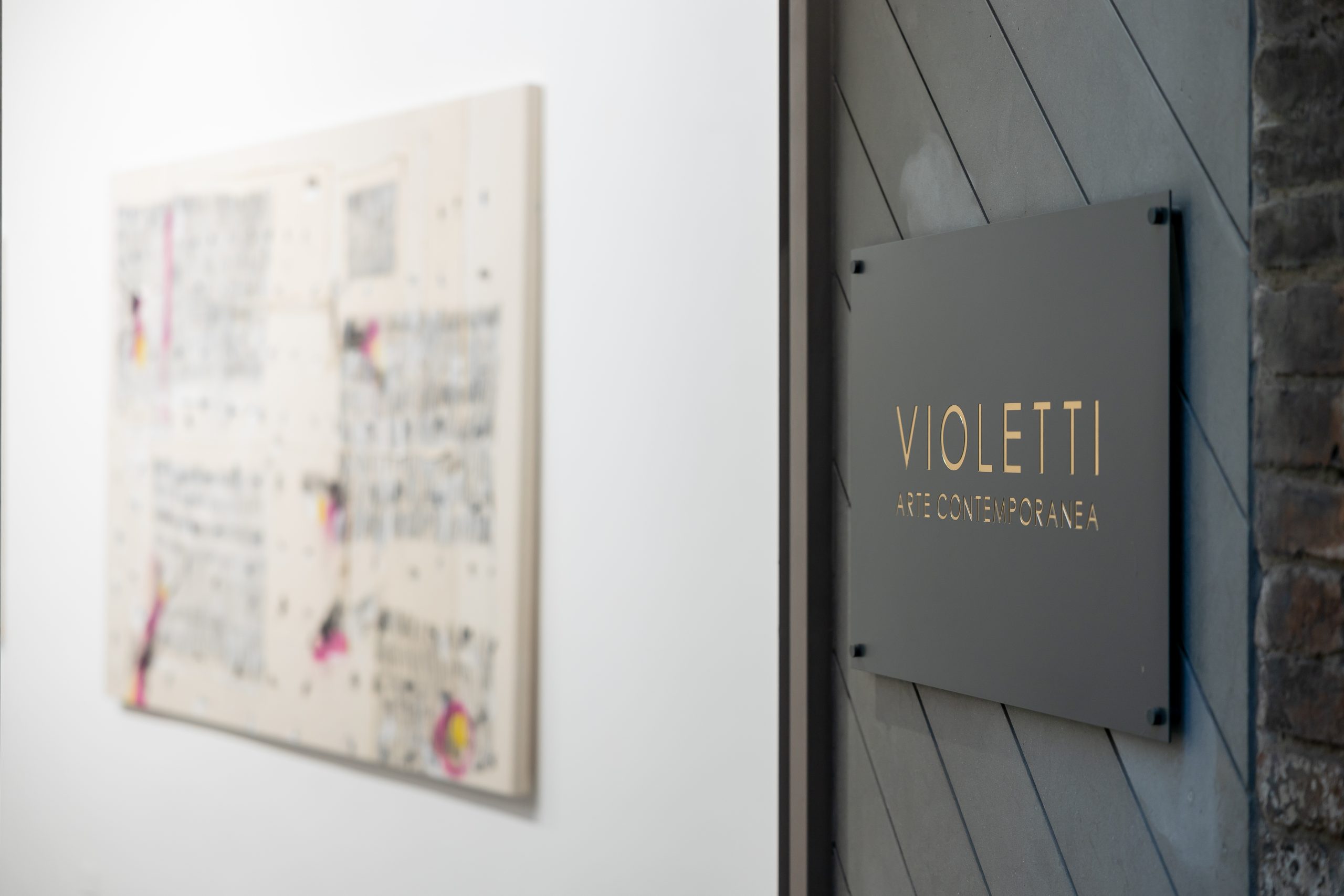26 OTTOBRE 2024 | via di città, 49 Siena
26 ottobre – 30 novembre 2024
“MORA MORA altri orizzonti”, mostra personale dell’artista Carlo Pizzichini a cura di Elena Violetti.
La Violetti Arte Contemporanea è lieta di presentare la mostra antologica di Carlo Pizzichini “MORA MORA altri orizzonti”, a cura e con testo critico di Elena Violetti. La Galleria raccoglie una selezione di opere a partire dal 2010 fino ad oggi e presenta nuovi lavori che derivano dalle sperimentazioni condotte dal Maestro in Madagascar.
Un’esposizione immersiva di gesti, segni, emozioni ispirati e trasposti in una serie di lavori pittorici e scultorei, vede Pizzichini ripercorrere il suo percorso artistico segnato dai tanti viaggi in luoghi lontani, esperienze spazio-temporali che hanno avuto un’influenza estetica, oltre che umana. I lavori di Pizzichini sono il luogo di un testo poetico, scritto sui motivi del desiderio di scoperta di “altri orizzonti”.
Il punto di partenza del progetto espositivo è l’espressione “Mora Mora”, che in Malgascio significa “piano piano”, una sorta di invito alla dolcezza della vita lenta, al dare importanza a ogni istante, a fare le cose con il tempo necessario, tanto o poco che sia. Piano piano, tanto dove devi andare? La deriva accelerata della nevrosi della nostra epoca trova il suo contrapposto in un luogo, il Madagascar, dove lo scorrere del tempo è dettato dal calar del Sole.
“Quell’orizzonte infocato d’arancio che tutte le sere si presenta puntuale un momento prima della notte, mentre nuvole viola si dispongono come cavalli in fila proprio sul limite d’argento dell’Oceano Indiano, quell’orizzonte seduce e nel silenzio sussurra. Parla di un’isola del passato, di un luogo unico, di un frammento di mondo dalle origini, di un archivio della natura, di un universo indecifrabile di popoli e cose, di uno scrigno di culture, disordinato, caotico, inafferrabile. Seduto davanti al mare, che divide la “Grande Terra” dal Mozambico, aspettando il buio, con la serenità di quel motto malagasy che fa di “mora mora” il ritmo della vita e l’intercalare più diffuso, mi dedico finalmente “all’Otium Deificante”, cioè alla contemplazione.” (Carlo Pizzichini)
Su tele di grandi dimensioni appaiono riferimenti e allusioni a terre lontane discretamente immersi nella tessitura segnica tipica del linguaggio pittorico di Pizzichini. Palinsesti poetici, stratificazioni di senso, emozione, vissuto. Pizzichini, come osservatore complice e curioso, rivela nelle sue opere l’essenza del Mondo, non come mera rappresentazione ma come “ricostruzione” data da un sentimento profondo e ancestrale.
Osservando la linea dell’orizzonte, Pizzichini scrive della sua Odissea personale. Un luogo di vuoti archetipi e primitiva purezza, dove il segno muta senza perdere la sua autonomia. Tracce, appunti, attimi di illuminazione, visioni, epifanie fanno parte del fluido di ispirazione e cultura di cui artista e opera si nutrono in uno scambio costante.
Quella di Pizzichini è una sintesi tra l’astrazione gestuale e la tradizione pittorica europea. L’innovativo uso del linguaggio e l’ampio raggio di allusioni rendono labili i confini tra pittura, disegno e scrittura, preservando allo stesso tempo un alto grado di astrazione, in grado di rinnovarsi sempre.
Il suo segno generatore di pensiero è accompagnato da una figuratività essenziale, che non rappresenta ma significa. Insieme confluiscono in un alfabeto ideografico, dove i simboli sono in rapporto immediato con un contenuto mentale. Questa compresenza rimanda alla vivida quotidianità di paesi lontani, vissuti e introiettati dall’artista che dà volto ai luoghi del mondo. Una coscienza culturale dove la memoria assume un significato profondo e guida il racconto dell’Umanità.
Pizzichini combina con estrema capacità l’alta arte e il basso materiale, il profano e il sublime, aggiungendo una nuova dimensione alle ambizioni “trascendenti” dell’astrazione tradizionale.
In mostra è presente la ceramica, elemento che l’artista padroneggia come pochi. Su di essa Pizzichini ha inciso il suo gesto: la materia primordiale si è messa a disposizione del genio. A Celle Ligure, dove questa tradizione ha origine antichissima e nomi eccellenti ne hanno segnato la storia, Pizzichini ha trovato il luogo dove poter trasmettere alla ceramica il suo gesto segnico.
Il linguaggio di Pizzichini è ampio e privo di classificazioni; l’opera è scrittura ed è in un certo qual modo in rapporto con la calligrafia ma la relazione non è né di imitazione né di ispirazione. La sua stenografia in presa diretta è il campo allusivo di una suggestione visiva. La scrittura possiede un significato che travalica la mera definizione di fissazione di un segno in una forma ma s’innalza a rappresentare l’identità culturale, la memoria, condivisione, l’addomesticamento del pensiero ed è tale da consentire l’astrazione, la formalizzazione, l’analisi. Quella di Pizzichini è una scrittura assoluta, una koinè comune di affinità e condivisione, convergenza emotiva per accedere all’universo delle conoscenze, fluttuante insieme condiviso, mezzo di comprensione collettiva. Un linguaggio asemantico che, proprio per questo aspetto, diventa universale ed è capace di accogliere ogni proiezione concettuale. La bellezza dell’opera di Pizzichini è la sintesi di condivisione dell’umano.
La spiritualità, la natura, il sacro, sono la linfa della poetica di Pizzichini, il cui mistico interesse va verso ciò che trattiene Umanità e Verità profonde e riconduce il pensiero alle fonti dell’Essere e del Creare.
Elena Violetti

